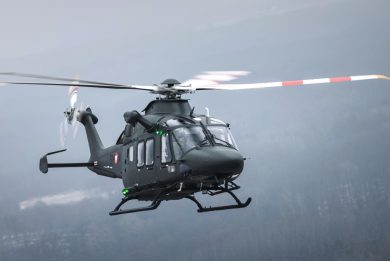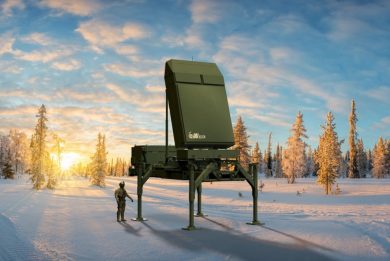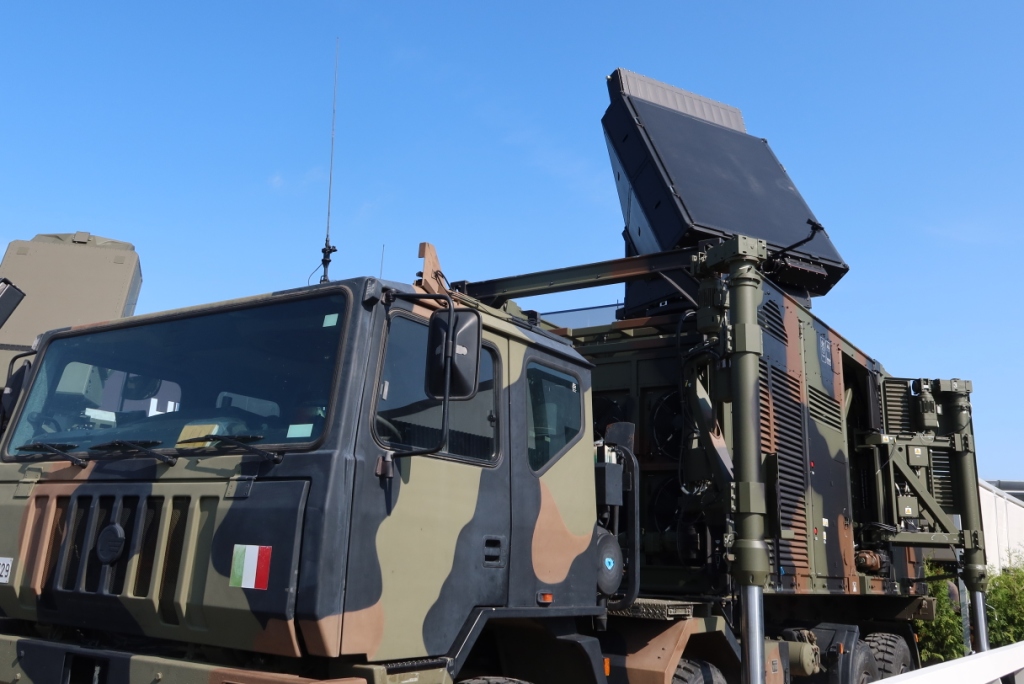
PAS 2023 – Leonardo’s Kronos Grand Mobile HP boosts SAMP/T capabilities
Exhibited for the first time in its SAMP/T NG configuration, Leonardo’s Kronos Grand Mobile HP is becoming a best-seller considering the increasing importance of air defence
Leveraging the work done on the naval C-band MFRA (Multi-Function Rdar Active) EMPAR and the four fixed faces (4FFs) Kronos Quad AESA-based radars, alongside the Kronos Grand Mobile, Leonardo developed the latest version of its Kronos family for land applications, the Kronos Grand Mobile HP, the latter letters stating for High Power, to cope with new threats and adopting new technologies.
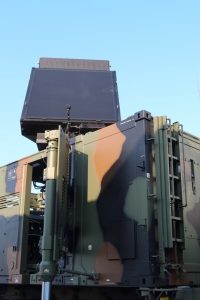
Among those the use of GalliumNitride (GaN) transmitters/receivers modules (TRMs) as part of the full AESA-based antenna, which increase the detection range more than 30% over the previous GaAs (Gallium Arsenide), considerably enhance reliability while reducing operating temperatures. Leonardo fully owns the GaN technology, and manufactures those TRMs at the company’s in-house foundry, specialised in the production of monolithic microwave integrated circuits.
The Kronos Grand Mobile HP is a spin-off of the Italian Army Forza NEC digitisation programme, and is part of the SAMP/T NG system and was contracted by the Hellenic Air Force for the NAMFI NATO firing range in Crete, the latter with special algorithms to cope with telemetry issues. According to Leonardo, the “HP” is raising a considerable interest on the international market, and especially in Eastern Europe, the company being currently talking to around 30 potential customers.
At the 2023 edition of the Paris Air Show the radar was exhibited in the version that will equip the SAMP/T NG air defence system, the new standard of the ground-based air defence system currently in service with the French Air Force and the Italian Army.
The radar module could be seen installed on an Astra/IDV 8×8 high mobility truck, the typical platform used by the Italian Army 4th Missile Regiment that deploys the SAMP/T. The contract for the radars aimed at the Italian Army was signed in late 2022. The radar being a mature system no major issues are expected in the integration phase, customers having underlined the importance of delivery times.
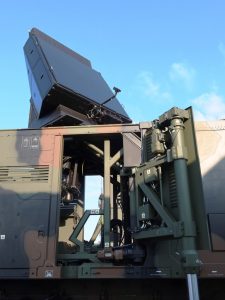
The Kronos Grand Mobile HP works in the C-band and is based on an active full phased array antenna rotating at 60 rounds per minute, hence the refresh time of 1 second for engaged air threats and 4 seconds for non engaged ones. The radar beam can be steered ±45° in azimuth and ±60° in elevation. Elevation coverage in both surveillance and tracking modes is 90°.
Declared instrumented range in air defence mode is over 250 km and in surveillance mode over 300 km, with a ceiling of 30,000 metres against air breathing threats. The three main optimised surveillance modes of operation are defence mode for fast reaction, air surveillance mode, and tactical ballistic missile mode.
Of course the radar is able to carry out the tracking role, track fast initiation starting 1 second after the target first detection. The radar can follow up to 500 tracks at the same time and engage 30 of them contemporary.
The Kronos Grand Mobile HP is able to counter enemy electronic countermeasures, as it is capable of emission control (EMCON), jammer detection, can automatic select the last jammed frequency, features a Side Lobe Blanking mode as well as Track On Jammer and Burn Through modes. It also features Jammer Cancellation as well as Main Beam Canceller and Side Lobe Canceller modes.
Leonardo proposes a C-RAM option to detect incoming rocket, artillery and mortar projectiles, with a field of view of ±45° in azimuth and ±60° in elevation. A command, control and communications module with three multifunction operators consoles is available, derived from that developed for the SAMP/T NG programme, hosted in a second 20-foot container, the radar itself being hosted in such a container with the ability to lower the antenna inside the module when in transport mode. The system can be make operational in less than 15 minutes, also on unprepared sites, using two operators.
Photos by P. Valpolini

